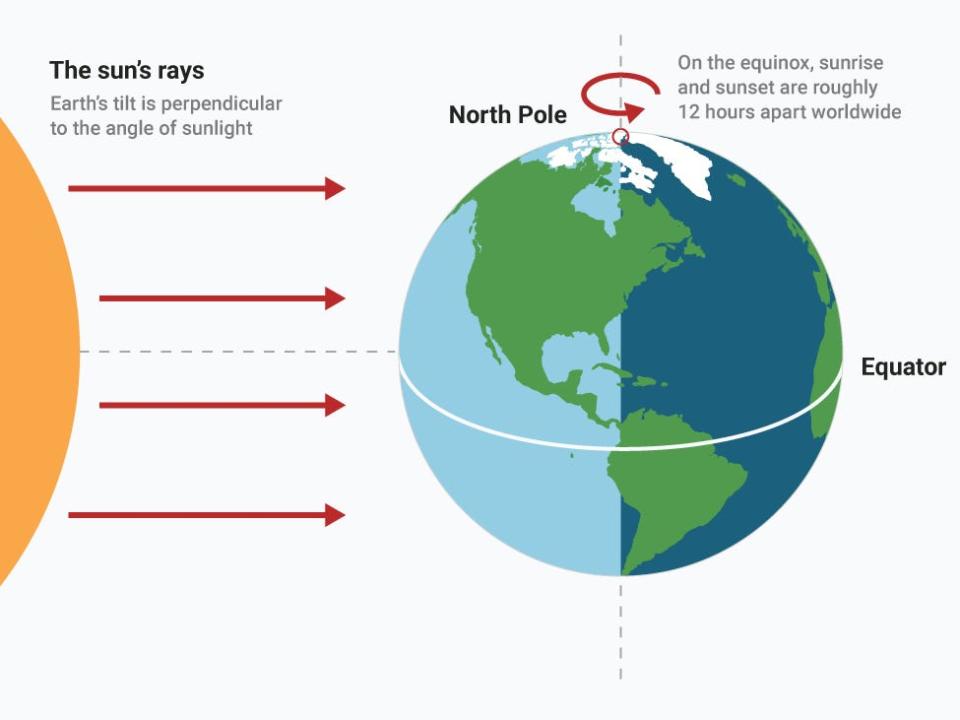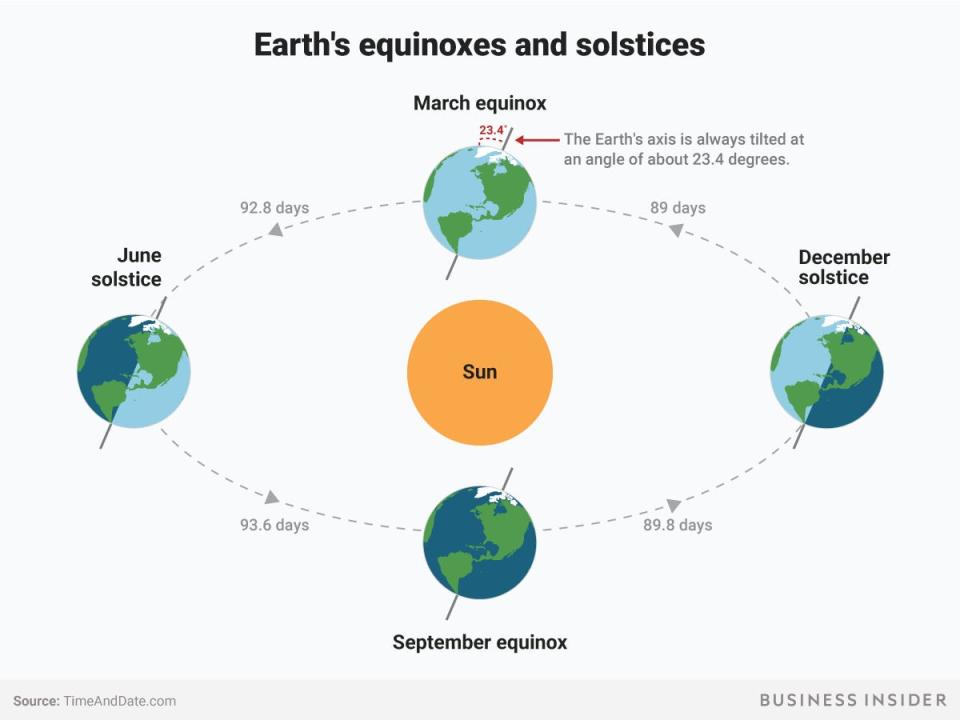The 2023 spring equinox is here — here's what it is and how it works

The vernal or spring equinox of 2023 happens Monday, March 20.
Equinoxes occur when Earth's tilted axis is perpendicular to the sun's rays.
During an equinox at Earth's equator, the sun appears almost directly overhead.
The year's spring equinox, also called the March or vernal equinox, falls on Monday March 20, at 5:24 p.m. EDT.
To people who live in Earth's northern hemisphere, this astronomical event signals the arrival of spring, winter's end, and the increasingly warm and brighter days that come with the pending arrival of summer.
For those in the southern hemisphere, though, fall will arrive: The days grow shorter, the weather cools, and the sunlight grows dimmer as winter approaches.
What drives this all-important seasonal clock?
Technically, two things: Earth's tilted axis and the planet's orbit around the sun.
How the spring equinox works
The Earth orbits the sun once every 365 days and six hours. Our planet also rotates once per day around a tilted axis.
That tilt is about 23.5 degrees (for now) and bathes different parts of the world with various intensities of light over the course of a year. Meanwhile, the planet's rotation keeps the heating even, like a 7,917-mile-wide rotisserie chicken made of rock and a little water.
Earth's rotation does not cause equinoxes. The spring equinox occurs when the sun's warming rays line up perpendicular to Earth's axial tilt:

If you stand directly on the equator at noon in the Eastern Time time zone at noon, the sun will appear more or less directly overhead. Your shadow will also be at its absolute minimum.
The sun also sets and rises roughly 12 hours apart during the equinox.
But this moment won't last as the Earth makes its way around the sun at a speed of roughly 66,600 mph.
Our planet's orbit is elliptical and its center of gravity slightly offset from the sun, so the time it takes to cycle through the seasons isn't perfectly divvied up.
About 92 days and 19 hours after the spring equinox, the Earth will reach its summer solstice. Another 93 days and six hours later, the fall or autumnal equinox will occur.

Some satellites fly around Earth in a geosynchronous orbit, which means they move fast enough to hover above one spot on the planet.

 Yahoo Autos
Yahoo Autos 